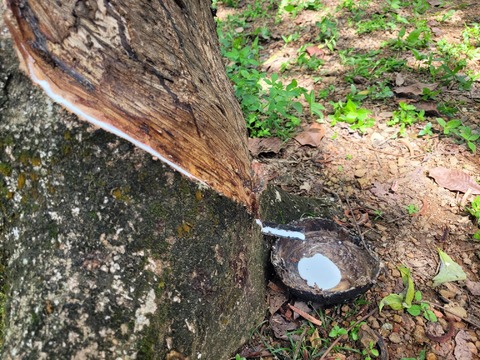Kuala Lumpur – Global natural rubber (NR) production increased by just under 1% in the first half of 2024 to 5.868 million tonnes, latest data by the Association of Natural Rubber Producing Countries (ANRPC) shows.

The 0.8% year-on-year growth contrasts with a 1.6% decline during the same period in the previous year, said ANRPC in its June/July edition of NR report.
The two months saw marginal year-on-year production growth of 0.3% and 0.1%, reaching 1.191 million tonnes and 1.293 million tonnes, respectively.
Nevertheless, the association has revised down the projected annual growth of NR production by 0.4%, to a total 14.380 million tonnes for the year, following outlook adjustments made by The Philippines and Viet Nam.
In the first half of 2024, production among ANRPC member countries of Indonesia, The Philippines, Sri Lanka and Thailand fell by 5.1%, 5.7%, 12.4% and 0.6%, respectively.
While other members and non-ANRPC countries reported positive growth, ranging from 0.2% to 10.3%, with China showing a significant 31.2% year-on-year increase to 261,000 tonnes during the first six months.
ANRPC linked the decline in output to a number of factors, including reduced farmer interest in tapping, due to low prices and uncertainties surrounding the European Union’s Deforestation-free Regulation (EUDR).
Furthermore, adverse weather conditions such as rainfalls, diseases and other external factors impacted production during the first six months of the year.
Meanwhile, ANPRC maintained its latest demand outlook for the year at 15.65 million tonnes, up 2.3% compared to 2023.
Based on its demand over the past seven months, China has trimmed its demand forecast to a 3.6% growth, amounting to 7.250 million tonnes.
Meanwhile, Vietnam has revised its 2023 demand upward to 386,000 tonnes, despite a marginal year-over-year decline of 1.0%.
In the first half of 2024, global demand for NR increased by 1.2%, reaching 7.707 million tonnes, up from
7.618 million tonnes during the same period last year.
This growth was primarily driven by higher demand in key Asian markets such as China, India, Indonesia, Myanmar, and Thailand, which together account for about 70% of global demand.
Consequently, the ANRPC’s share of global demand expanded by 1.4 percentage points to 74.1%.
In contrast, demand from non-ANRPC members contracted by 3.9%, totalling 1.997 million tonnes over the same period.




























